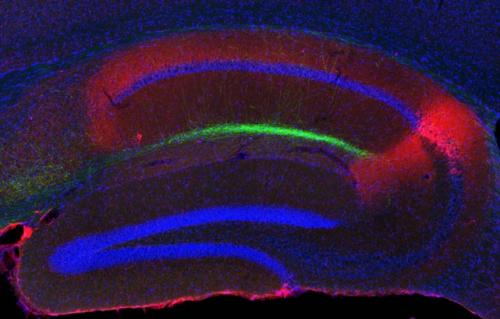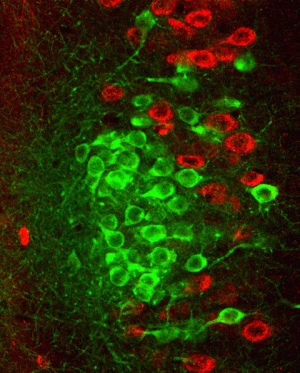
Image via RIKEN
Neuroscientists at MIT have found two neural circuits in the brain that help control time-linked memories and how they are formed. This process in the brain helps regulate if it needs to protect itself from an impending threat.
Episodic memories, or memories of events, have three the consistent elements of what, where, and when. These memories are stored in the brain’s hippocampus, where each of these elements is organized. The hippocampus also sends signals to the cerebral cortex that sits outside the hippocampus. The multi-layered entorhinal cortex receives sensory information from the brain’s sensory processing areas. This information is then sent to the hippocampus.
Earlier research determined much information about how the brain links how the place and object components of memory are stored. Place cells, or neurons in the hippocampus, fire when an animal is in a certain location. The animal remembers the location by the firing place cells.

Image of cells in the entorhinal cortex layer II via RIKEN
In 2011, a study was performed that identified a brain circuit for mice to link memories to a tone and an electrical shock. The events occurred 20 seconds apart. This brain circuit connects the third layer of the entorhinal cortex to the CA1 region of the hippocampus. When the monosynaptic circuit was interrupted, the mice were not afraid of the tone.
In recent studies, scientists have discovered an unknown circuit that suppresses the monosynaptic circuit. The signal starts in excitatory neuron “island cells” that are formed in layer 2 and start stimulating the neurons on CA1. This surpresses the excitatory CA1 neurons that were triggered by the monosynaptic circuit.
A technology called optogenetics was used, enabling clusters of neurons to be activated/deactivated with light. This shows how the two circuits interact. The researchers used also mice for this recent and similar study. The mice heard a beep, and then received a shock 20 seconds later. Scientists could lengthen the period of time between the beep and the shock by creating activity with the layer 3 cells or suppressing the island cells of layer 2.
The hypothesis drawn was that CA1 activity in the brain holds the memory of the tone so it is still there when the shock is administered. At that moment, the two memories are then linked. Researchers are still determining if CA1 neurons will continue being active during the gap in between events.
Story via Phys.org
Advertisement
Learn more about Electronic Products Magazine





